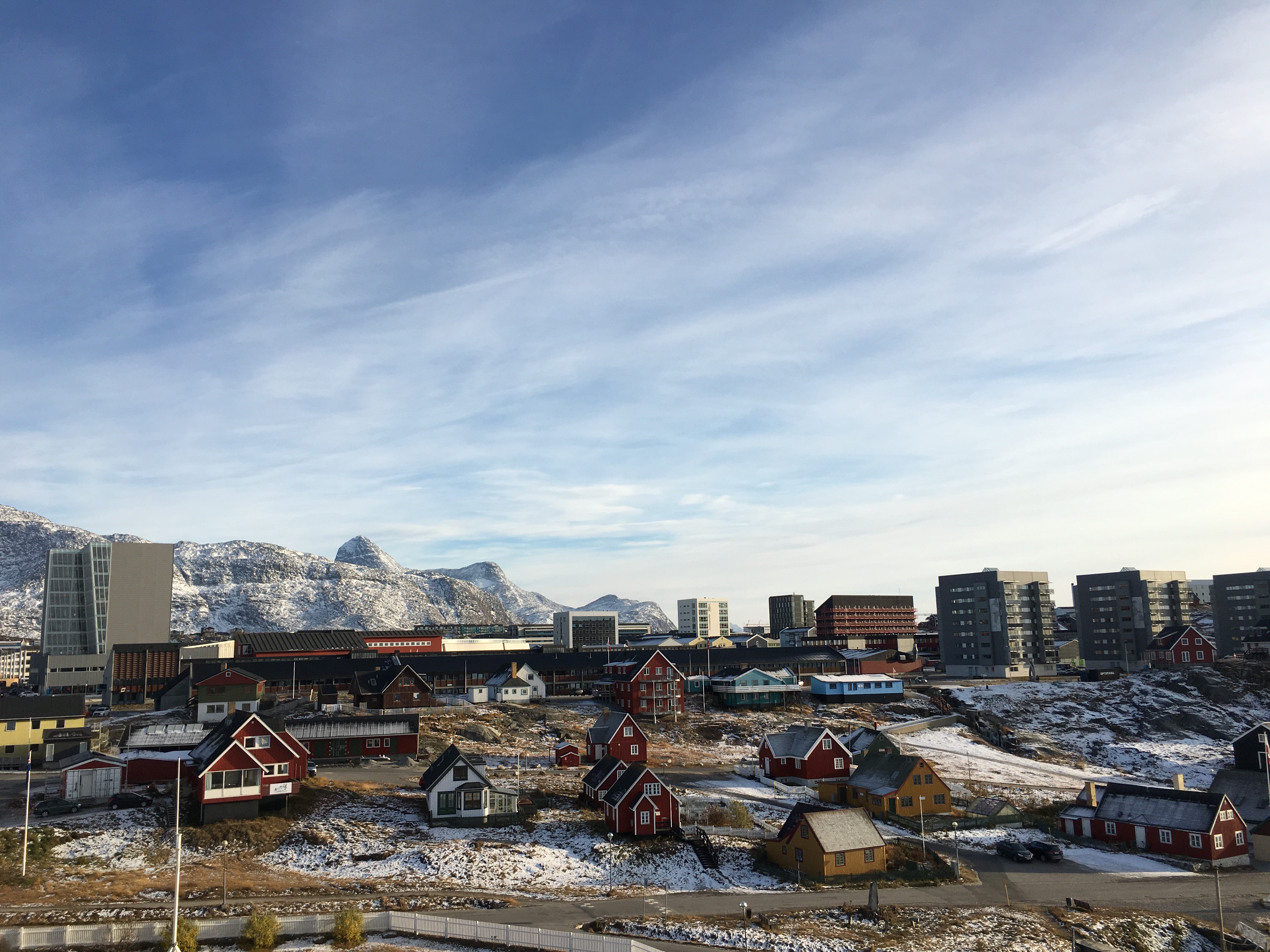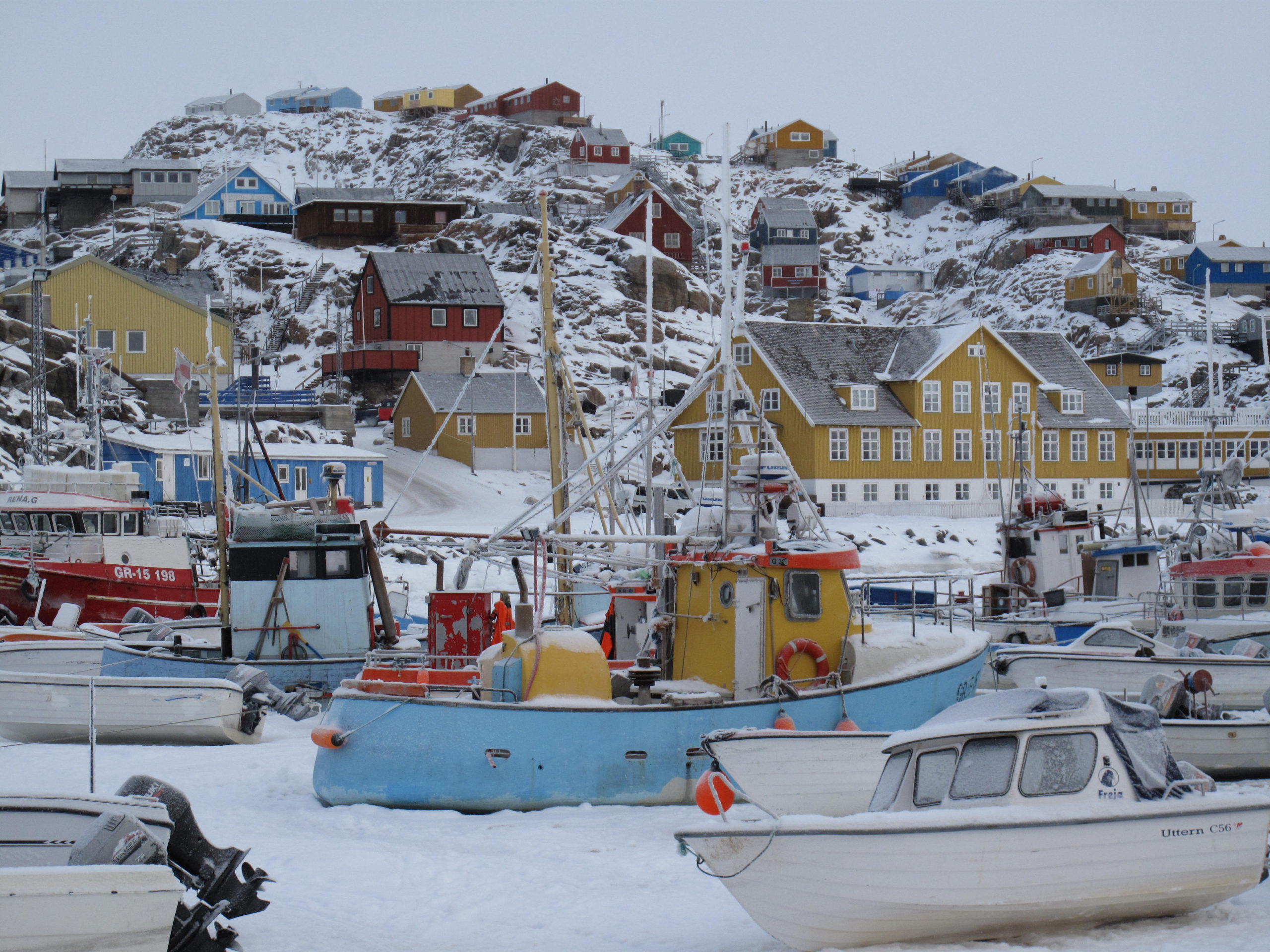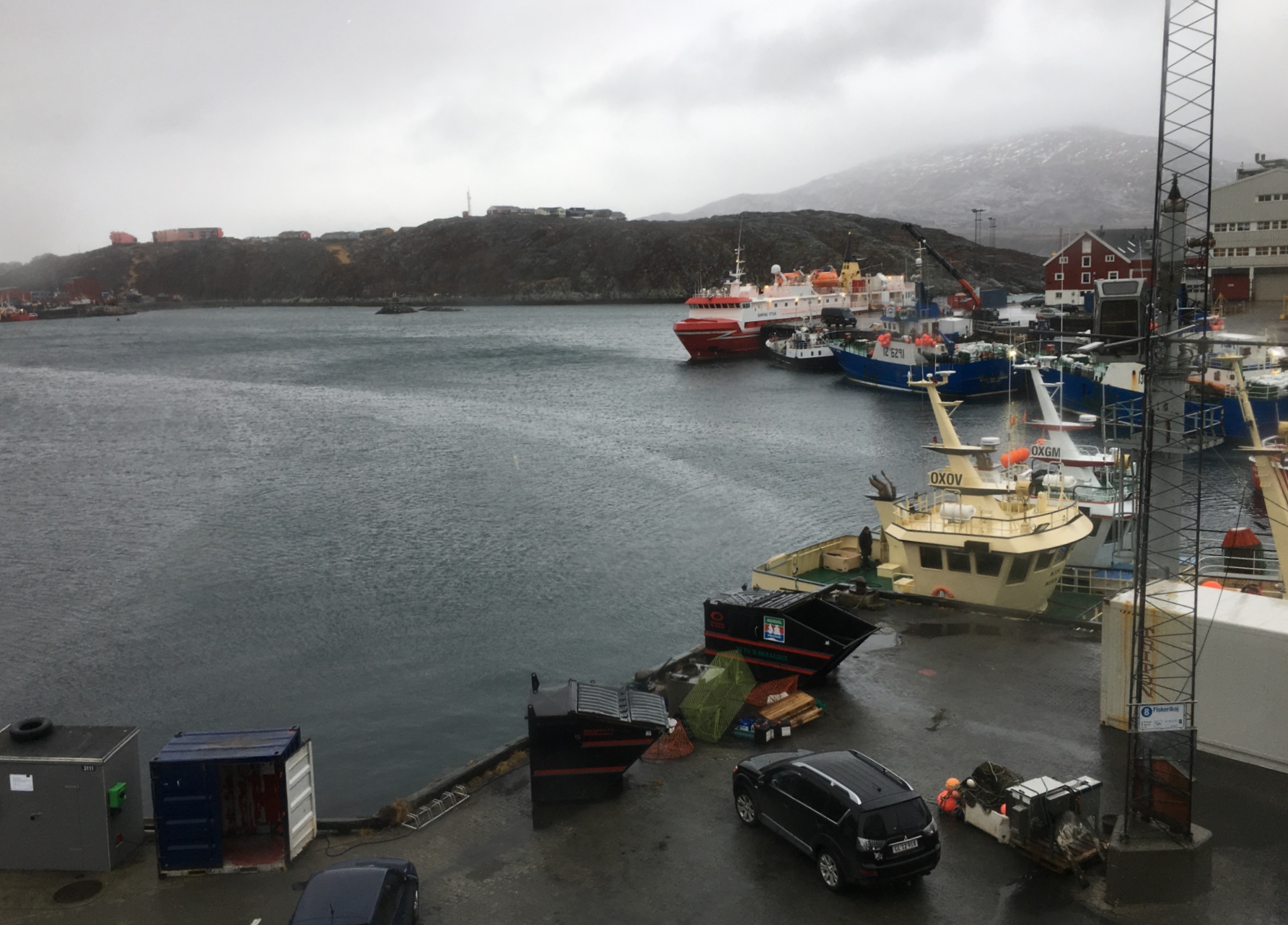Greenland stays optimistic while bracing for a long fight against the coronavirus
The country's natural isolation could help stave off the virus — but also make it harder to fight an epidemic there.

This may be hard to believe for Americans or people in Europe: Not one person has yet died from corona in Greenland and not one is in intensive care — at least not at the time of writing.
The pandemic may yet strike hard — dangerously hard — in Greenland, the world’s largest island, with its scattered population of some 57,000 and a limited health care system. But so far only 10 people have been found to be bearers of the virus and all of them in Nuuk, the capital. All of these have been quarantined — and some have even been released because they have come through and are now virus-free.
Meanwhile, Greenland’s capital city is closed off. No ordinary people are allowed to enter or leave Nuuk without special permission, not even in private boats or by snowmobile. All sales of alcohol are temporarily prohibited in several communities.
[Read more: COVID-19 and the Arctic]
The rest of Greenland is still completely corona-free, which is of course a blessing to be cherished as thousands die in the rest of the world, but now a crucial and painfully complex question begs an answer: How long can you keep an entire nation sealed of from the rest of the world? How far should the authorities go to keep the virus out? How long will ordinary people cope with isolation, how long should the government let the economy bleed — and how quickly will the virus spread when the the lockdown is loosened?
Travelling to Greenland is close to impossible. The Nuuk authorities have declared the whole of Greenland a no-go zone for ordinary travellers from outside. No flights, ship or other means of travel will get you there unless you travel with very special permission, and no ordinary people are allowed to leave the island.
[Nuuk is sealed off after a second COVID-19 case is confirmed]
The few planes and helicopters that still fly internally between Greenland’s 72 towns and villages, none of which are connected by railways or roads, carry only mail and the odd health care official. Normally aircraft from Air Greenland are often full; the huge distances in Greenland have led to a highly developed network of flights, some routes even subsidized by the government. These days, however, nobody knows when they will be allowed to travel again.
A history of deadly epidemics brought to Greenland by colonizers from Europe fuels fear that the coronavirus, if not checked, will fast reach the many small outlying villages, thereby creating urgent and impossible demands for emergency air transport and intensive care in Greenland’s small hospitals. Greenlanders are neither more nor less susceptible to coronavirus than others, but it would take relatively few seriously ill patients to outrun the capacity of the nation’s health services; thus the lockdown.
The question is now: What’s next?
Saattut
Not many weeks ago I was in Saattut, a welcoming small fishing village of some 250 people in the far northwestern part of Greenland, an hour’s ride by dog sled or snowmobile over the frozen fjord from Uummannaq, the main town in those parts.
Today, of course, I could not go to Saattut if I wanted to. Apollo Mathiassen, a fisherman who takes his dog sled onto the sea ice every day to fish for halibut, tells me over the phone how the small town, following insistent urgings from the government in Nuuk, is almost without physical contact with the rest of the world, including the nearest larger town of Uummannaq, population approximately 1,500.
“The snowmobile trails to Uummannaq are normally wide and very much used. Now they have almost disappeared,” he tells me.
The school in Saattut is closed, but the small fish factory remains open. In order to avoid physical contact with the factory workers, Apollo Mathiassen leaves his catch on the ice outside the factory for the factory workers to collect when he has left. In the small local shop no cash is allowed, and everybody in Saattut is careful to avoid physical proximity with other than their closest family even if nobody in Saattut or Uummannaq is know to be infected with coronavirus.

Apollo Mathiassen is satisfied with the lockdown so far. “We get by. People are positive now after some initial worrying. We understand that everything should be okay as long as we follow instructions”, he says.
He has no idea how long the lockdown will remain in force.
“On Friday it will be two weeks that we have been careful and still nobody here shows any signs of illness. If nobody is infected, I think it will be sensible to allow a more relaxed way of being together here in Saattut, but I don’t know what the plan is. Perhaps they will relax the rules after Easter,” he predicts.
Lockdown for a year?
Several hundred kilometers further south in the town of Sisimiut on Greenland’s west coast, Ove Rosing Olsen, a former medical doctor, expects the lockdown to last much longer, perhaps a whole year.
In 1992, Ove Rosing Olsen became Greenland’s first Minister of Health as the home rule government in Greenland took over responsibility for the health system from Denmark. Later, he served as head of the health services in the central part of Greenland.
“Our capacity to deal with respiratory insufficiency is limited. If the system is overrun by too many patients with severe symptoms, many who could have been saved with the right treatment, will die. So instead of allowing the virus to spread, it is all about keeping it at bay until a vaccine is available. I believe we will have to have very little contact with others for a longer time, perhaps for another 12 months,” he tells me on the phone.
He worries that many Greenlanders could eventually be at high risk of exposure to coronavirus because many large families live in small apartments or in small houses. As he studied to become a doctor, he learned of a smallpox epidemic in 1801 that that killed some 80 percent of Sisimiut’s citizens; measles took a heavy toll as late as 1954.
“Most lately, we had the swine-influenza in 2009 that had almost the whole of Sisimiut lying down. One child died. That was a serious epidemic, and now corona is, from what I understand, much worse. I think we will still be partly isolated as we are now for at least six months and perhaps a whole year. But as long as our fisheries are kept intact, we will be okay,” he says.

Since leaving the health care system, Ove Rosing Olsen has become a manager within the fleet of fishing trawlers crucial to Greenland’s economy. More than 90 percent of Greenland’s export revenue come from fish and shrimp. The trawlers still operate despite the pandemic, but Ove Rosing Olsen tells me how precautions have been taken: As in Saattut, the fishermen who bring the catch to shore in Sisimiut are kept out of physical contact with those who run the processing plants on land. On board they are kept apart from any technician who enters the ships to do maintenance.
One trawler is presently in the Barents Sea north of Norway and the shifting of crew members now demands special travel permissions, chartered aircrafts, quarantine and other measures. “We will try this for the first time in a few days. These are all new procedures, never tried before,” he says.
Telemedicine
From Nuuk, Gert Mulvad, a medical doctor at the health care center of Queen Ingrid’s Hospital, Greenland’s only larger medical facility, explains to me that the central authorities in Nuuk have not yet disclosed any details on how or when they will reopen schools or lift the bans on alcohol and travel.
“I am sure they are working on that right now, just like governments all over the world. Our strategy, as in other countries, is to make sure the health care system is not overwhelmed. The difference is that we have more options for isolating the country. The problem is that if we don’t get a vaccine or a way to treat patients who get seriously ill, we don’t know what will happen when we open the country again,” he says.
“The politicians have to make these decisions and it will be really important what ordinary people think. If we had a vaccine or really good offers of treatment for the dangerously ill, it would be easy but that is not where we are yet,” he tells me.
Anders Koch, who is a medical epidemiologist in Copenhagen, as well as a university professor in Greenland and past president of the International Union for Circumpolar Health also looks to the near future with some concern:
“The reason why we are particularly concerned with Arctic communities is not that we necessarily consider their populations more susceptible to more severe courses of the diseases. The main problem is that the health systems are not geared for such a challenge. They are vulnerable, have a limited amount of staff, hospital beds and ventilators that are not spread out across the region. If you need ventilator treatment in Greenland, you have to be transferred to the capital Nuuk – and three quarters of the population live outside of Nuuk. So, the health system is not adaptive in the same ways as the Danish system,” he said in an interview with the Arctic Council’s website.
Meanwhile, Greenland’s health care professionals are preparing for a potential rush of corona patients if the virus should somehow beat the lockdown.
I have been to Queen Ingrid’s Hospital and other health care facilities in Greenland, which all seem well equipped and modern, at least to the non-professional eye, but Mulvad confirms that there is limited capacity for intensive care and for ventilator treatment — even if the system has other strengths.
Mulvad, who is also chair of the Arctic Health and Wellbeing network under the University of the Arctic, describes to me how even the most remote village in Greenland is directly connected by internet and telephone with the specialists in Nuuk, a system designed to overcome the big distances and weather that may delay air transport of patients.
“In principle, all doctors, including the specialists in Nuuk, are responsible for patients in all of Greenland, no matter where the patient lives,” he says.
Greenland’s health system, like those of other Arctic communities, suffers from recruitment problems and from a high turnover among health care professionals, but a common electronic patient chart system helps alleviate at least some of the difficulties:
“I can be at my desk in Nuuk and look at the patient charts of all patients in the country, while I share video clips or pictures on the internet,” Mulvad says. Finally, he tells me, patients do not have to worry about paying as health care in Greenland is free, paid for by the Self Rule government in Nuuk with taxpayers money.
Mulvad explains how Queen Ingrid’s Hospital is now urgently establishing the technical facilities needed for corona testing — until that is in place all tests have to be sent to Denmark for analysis. Also, he and other professionals are rapidly gaining new knowledge on how to deliver long-distance telemedicine. When I ask him how the corona pandemic will look in Greenland in six months, he remains optimistic:
“If we handle this correctly, we will have handled yet another epidemic, and it will not be the end of the world. Meanwhile, we will have learned a lot that will benefit us in the long run,” he says.
Martin Breum is a Danish journalist and author based in Copenhagen. He writes regularly on Arctic affairs for ArcticToday.com. Find him at www.martinbreum.dk.